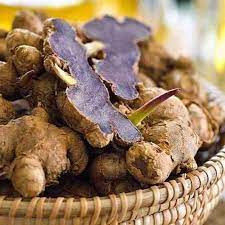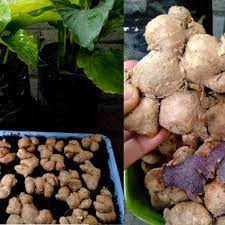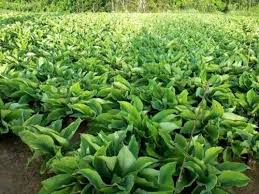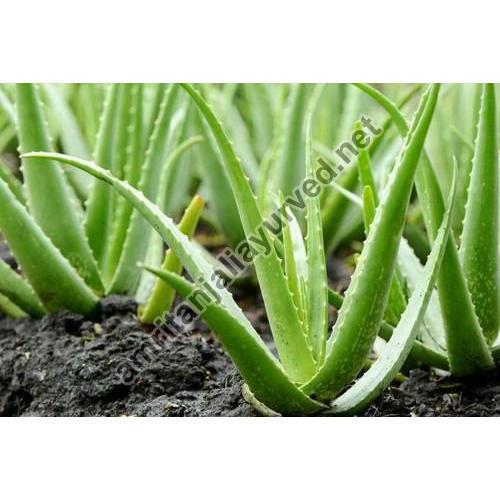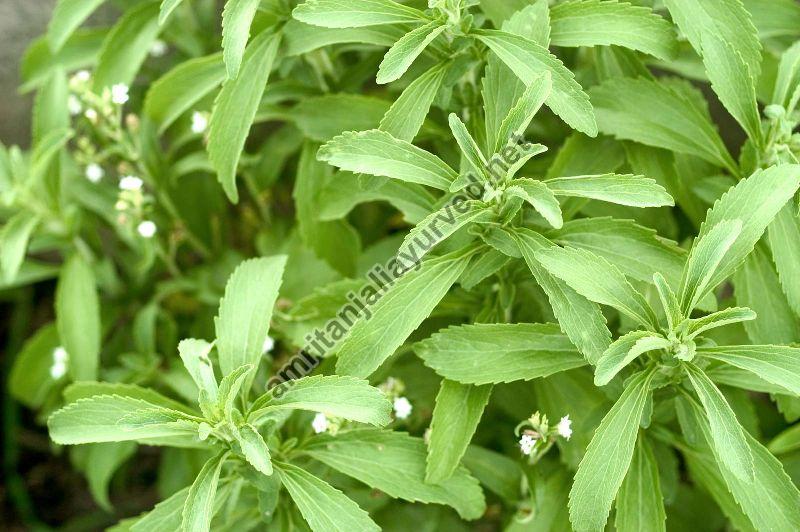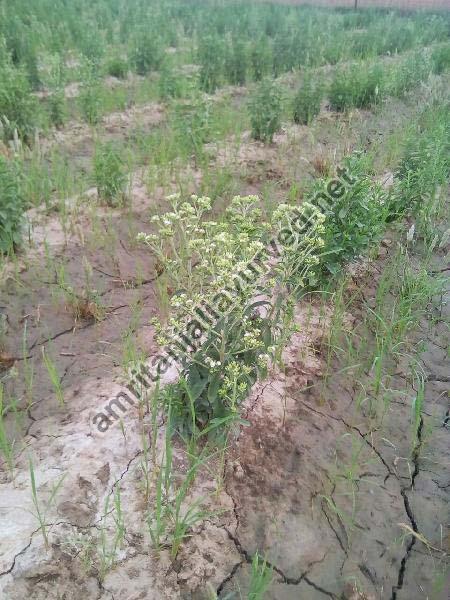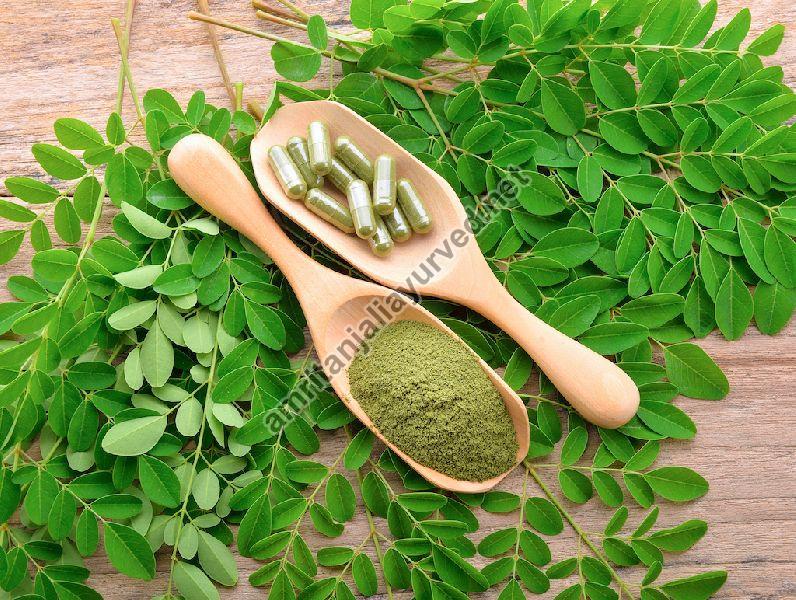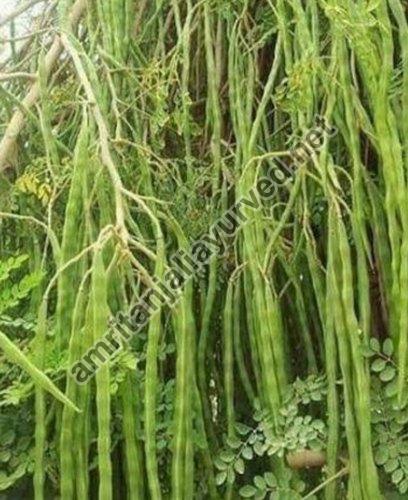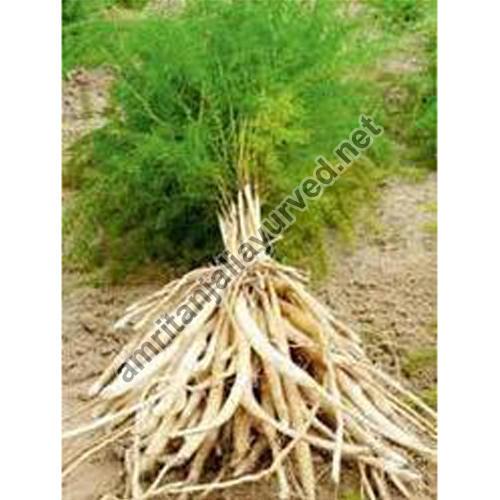Saheli Nagar, Udaipur, Rajasthan
- GST NO. : 08AAOCA7653C1ZJ
Medicinal Plants
Leading Manufacturers, Exporters, Wholesaler, Retailer and Trader of Black Ginger seeds, Aloe Vera Plants, Stevia Plants, Moringa Leaf Plants, Moringa Drumstick Plants, Sarpagandha Plants and dry shatavari root from Udaipur.
| Business Type | Manufacturer, Exporter, Supplier |
| Seed Type | Natural |
| Usage/Application | Agriculture |
| Packaging Size | 5kg |
| Cultivation Type | Natural, Common, Organic |
| Style | Natural |
| Shelf Life | 6months |
| Moisture | 6-9%max |
| Packaging Type | Gunny Bag |
| Country of Origin | India,India |
| Brand Name | amritanjali ayurved |
| Color | blue - brown,brown |
| Purity | 100% |
| Feature | seeds |
| Form | rhizome |
| Type | seeds |
| Product Code | 12113 |
| Port | udaipur |
| Payment Terms | T/T |
| Delivery Time | 5 days |
| Packaging Details | as per specification and order quantiy , |
Preferred Buyer From
| Location | Worldwide |
Black ginger," scientifically known as Kaempferia parviflora, is a plant native to India, Thailand, Malaysia, and other parts of Southeast Asia. It's also known as "Krachai Dum" in Thai. The plant has been traditionally used in Thai medicine for its various potential health benefits.
Black ginger is often used as an aphrodisiac and is believed to improve male sexual performance. Additionally, it's used to boost energy, relieve fatigue, alleviate muscle pain, and improve circulation. Some studies suggest that black ginger may have antioxidant and anti-inflammatory properties, but further research is needed to fully understand its effects.
| Business Type | Manufacturer, Exporter, Supplier, Retailer |
| Type | Fresh |
| Application | Beverages |
| Cultivation Type | Organic |
| Color | Green |
| Feature | Easy To Grow, Insect Free |
| Benefits | Burns on skin as well in other problems |
| Usage | Cosmetic |
| Condition | Good |
| Other Necessities | Fast Growth |
| Soil Specific | Loamy |
| Spread ( Width of Trunk ) | 8 day |
| Weight | 300 gram |
| Height | 1 Feet |
| Ageing Period | 24-36 Month |
| Necessities | Full Sun Exposure |
Preferred Buyer From
| Location | Worldwide |
Aloe Vera is a medicinal plant which grows 2ft high on yearly basis. Aloevera is stem less or very short stemmed plant, which grows 24-40 inches high and the leaves are about 4inches wide. The leaves are thick and fleshy and green to grey in color. The leaves are peeled and there’s a viscous liquid is found. The Aloevera leaves are also used in the making of pickles, vegetables, chyawanprash etc. The margin of the leaf is serrated and has small white teeth/ thorns. It is MEDICINAL PLANT.
Aloebarbadensis is the most common specie of Aloevera and grown in Rajasthan, M.P, U.P and Gujarat.
We efficiently carry out systematic process at every stage, to make certain that the product basket is developed as per the specified requirements. Our fast transit facilities make us able to easily meet the expected delivery deadlines of the clients.
Details : Aloe Vera is a medicinal plant with grows 2ft high on yearly basis. Aloe vera is stem less or very short stemmed plant, which grows 24-40inches high and the leaves are about 4inches wide. The leaves are thick and fleshy and green to grey in colour. The leaves are peeled and there’s a viscous liquid is found. The Aloe vera leaves are also used in making of pickles, vegetables, chyawanprash etc. The margin of the leaf is serrated and has small white teeth/ thorns. It is Medicinal Plant.
Uses :
- In ayurveda, Aloe vera is a natural coolant herb. Bitter-sweet in taste, produces purgative effect. It is used in the treatment of bloating, constipation, gastritis, fever with Kapha dominance and respiratory problems. It is extensively used in liver and spleen disorders. Aloe vera is also used in the treatment of burns, boils. It calms pitta, detoxifies blood and is very useful in many skin diseases. It is good for eye power, it is natural detoxifier. Aloe vera is a good anti aging herb. It is good for hair, when used in the form of Aloe vera hair gel. Aloe vera flowers balance Vata and Pitta. They are also useful in intestinal worms.
- The Aloe Vera gel is used to make creams, soaps, shampoo, gel, Chywanprash, Herbal Powder etc. Aloe Vera’s demand as a Herbal Product is extremely high in India and world over.
Cultivation :
- Aloe vera is a very low maintenance plant, it doesn’t evening require pesticides or manure. Aloe is grown in warm tropical areas and cannot survive freezing temperature. Once it is planted then you get yield for next 5yrs.
- Aloe Vera can be cultivated on any soil for ‘dry land management’, sandy loamy soil is the best suited for it. It is grown almost all parts of India, even under constant drought conditions. However, the crop grows well in entire tropical and sub-tropical regions. Since its water requirement is very low, it is best suited for cultivation in Arid and semiarid region specially in Rajasthan, Gujarat, M.P and Maharashtra.
- It is grown successfully in marginal to sub marginal soils having low fertility. However, it is observed that its growth was faster under medium fertile heavier soils. Though, well drained loam to coarse sandy loam soils with moderate fertility and pH up to 8.5 are preferred for its commercial cultivation.
Species :
- Aloe babatiensis is the most common specie of aloe vera and grown in Rajasthan, M.P, U.P and Gujarat.
- Marketing
- Aloe Vera demand is immense therefore marketing it is not difficult. Wet aloe vera leaves are brought by many Ayurvedic Pharmaceuticals companies. Our company also provides the facility of Buy Back agreement.
- Harvesting
- Within first year of cultivation, aloe vera leaves can be harvested. Leaving aside 3leaves rest other leaves can be cut using sharp hears. Generally 3-4 pickings per year can be taken depending upon the growth of plants.
- Aloe Vera Economic Viability & Income and Expenditure Project
Aloevera all material bulk available :
- Aloevera plant
- Aloevera green fresh leaves
- Aloevera pulp
- Aloevera powder
- Aloevera dry leaf &powder
- Aloevera juice
- Aloevera gel
Good quality planting material of the Aloevera is available with us. The aloevera baby plants specifications are as follows -
- Variety Aloevera barbendasis
- 6- 9 inch in size
- Green in colour
- Good medicinal values
- Material is in ready stock
- More than 1000000 Plants available
- The planting material will be well packed and delivered to your location. and full consultancy aloevera cultivation and under buy back agreement.
With proper network of buyers with us, we are able to provide returns of the farmers/cultivators who purchase the planting material from us and do farming as per our instructions. The crop/crops under buy back agreement are provided with targeted requirement. We are making farming a business which gives assured profits.
Persons interested in farming with buy back agreement will be entertained only on prior appointment basis. +91-9799931200
| Business Type | Manufacturer, Exporter, Supplier, Retailer |
| Application | Medicinal |
| Cultivation Type | Organic |
| Shelf Life | 5 Years |
| Feature | Multiple Health Benefits |
| Botanical Name | Stevia rebaudiana |
| Grade | A |
| Soil Specific | Well Drained |
| Other Necessities | Fast Growth |
| Height When Full Growth | 2-3feet |
| Height | 4'' |
Preferred Buyer From
| Location | Worldwide |
Our company is ranked amidst progressive distributors of the product in Udaipur(India) as well as varied other marketplaces. To provide complete satisfaction to the customers, we offer only defect-free range of products that are tested against varied quality parameters.
Stevia is one of the most profitable crops for coming future. As the crop is only source of natural sugar free / calorie free sweetener. People are being less hard worker that why they need calorie free substitute of sugar. Artificial sweeteners are problematic for long term consumption. In the countries like Japan and Korea stevia sweetener contribute 50% market share. Stevia crop is propagated by seedlings.
We can provide you stevia seedling (plants) .You will require 30,000 seedlings per acre. We provide complete consultancy from cultivation technology, planting material supply, nutrient management (manure), water management (drip irrigation installation), and the most important one the Buy back. We can also provide buyback facility before starting the cultivation to the growers so that they can be ensuring at marketing side.
In the consultancy we will assist you in
- Understanding the basics of Stevia crop
- Farm visit
- Soil and water sampling of your farm
- Land Development
- Manure and other farm input supply
- Irrigation system installation
- Planting material supply
- Pest management
- Drying of the leaves, Buyback facility
- Export market development
- Processing of the leaves.
We are leading Agro Technology and Agribusiness consultancy provider. We strongly believe in business ethics. We have highly professional team of subject matter specialist of agriculture and allied disciplines. We believe in truly consultancy with independent and profitable solutions. For us agriculture is the base of development, height of development, strength of development, depth of development. For a long term sustainable social & economical development agriculture must be the axel. Agriculture development must environment friendly, sustainable, efficient use of available resources and non hazardous.
We provide Agro technology and Agribusiness consultancy through better utilization of your resources, value of your money, independent consultancy, cost effective, profitable solutions and complete satisfaction without any deviation.
Stevia Material Available
- stevia plant & seeds
- stevia dry fresh green leaf
- stevia green powder
- stevia liquid
- stevia tablete
- stivoside powder
| Business Type | Manufacturer, Exporter, Supplier, Retailer |
| Other Necessities | Full Sun Exposure |
| Soil Specific | Well Drained |
| Botanical Name | Moringa Oleifera |
| Type | Organic |
| Usage/Application | Plantation |
| Cultivation Type | Organic |
Preferred Buyer From
| Location | Worldwide |
Moringa oleifera Lamarck, originally from India, is widely distributed in many tropical regions; in the Pacific region (Aregheore 2002), in West Africa (Freiberger et al 1998; Lockett et al 2000), as well as Central America and the Caribbean (Ramachandran et al 1980; Foidl et al 1999).
It is a multi-purpose plant cultivated for medicinal applications and used as food and feed. Seeds of Moringa were extracted for oil and curry powder (Golh 1998) and have been used for cleaning water. In some places in Vietnam, Moringa leaves are used for food (Pham Hoang Ho 1970). Agronomic trials with Moringa (Manh et al 2003) show that the plant can grow well in hilly areas, in weathered soils of low fertility in Tinh Bien district, An Giang province. However, information about growth of Moringa in the acid soil regions of the Mekong Delta is almost absent.
Moringa foliage is known as a rich protein source, low anti-nutritional factors (Makka and Becker 1996). Moringa foliages is therefore a potential inexpensive protein source (Sarwatt 2004).
The aim of the present study was firstly to measure some agronomic characteristics of Moringa for biomass production and secondly to evaluate its use as a basal diet for goat production. A comparison between methods of feeding Moringa and Leucaena (by hanging the branches or putting them in the feed trough) was included in the study in view of the findings by Theng Kouch et al (2003) that hanging the branches of forage shrubs supported higher feed intakes and digestibility as compared with putting it in the feed trough.
| Business Type | Manufacturer, Exporter, Supplier, Retailer |
| Cultivation Type: | Organic |
| Other Necessities: | Well Watered,Full Sun Exposure |
| Soil Specific: | Acidic,Alkaline |
| Height: | 1 Feet |
| Type: | Herbal Plant |
Preferred Buyer From
| Location | Worldwide |
With our years of experience and expertise, we are making available premium range of Moringa Drumstick Plants(Moringa oleifera) in the market. To provide our buyers with premium products, we make sure only superior grade materials are used for manufacturing them.
More About Moringa Drumstick Plants :
- Cultivate Moringa olifera (sahjana or drumstick) and earn up to 2lakhs per acer . we will provide seeds/plants of best quality and guaranty purchase of fruit and dry leaves from site.
- Moringa plants required less water & care and gives good return. Its used as Vegitable, medicine, fodder and plant growth promoter.
- Its leaves and fruit is good animal feed.
- Cultivate Moringa and get financial freedom.
- Lemongrass Cultivation
Planting :
- The seeds of annual moringa may be directly dibbled in the pit to ensure accelerated and faster growth of the seedlings. The best suited season for sowing the seeds is September under Southern Indian conditions. The time of sowing has to be strictly adhered to because the flowering phase should not coincide with monsoon seasons, which results in heavy flower shedding.
- A plant spacing of 2.5 x 2.5 m between rows and seeds should be adopted , giving a plant population of 1600 plants/ha. Pits of 45x45x45 cm in size are dug out and then the seeds are sown in the centre of the pit. The seed germinates 10 to 12 days after sowing. The seed requirement per hectare is 625g. When planted in single rows along with irrigation channels, a spacing of 2m is sufficient.
- Treatment of moringa seeds with Azospirillum cultures at the rate of 100 g per 625 g of seeds before sowing resulted in early germination, and increased seedling vigour, growth and yield.
Irrigation :
- Growing moringa plants may not require watering except during hot weather when they may be irrigated once a week. Annual moringa responds well to irrigation and the yield can be doubled (vegetable moringa fruit) by drip irrigation as compared to rain-fed crops,
- Drip irrigation at the rate of 4 lit/day can enhance yields by 57 per cent as compared to rain-fed crop .
Fertilizer :
- Moringa trees are generally grown successfully without fertilizers. Southern India, ring trenches are dug about 10 cm from trees during the rainy season and filled with green leaves, manure and ash, and then covered with soil. This is said to promote higher fruit yields
- If fertilisers are applied, the crop requires 44 : 16 : 30 g NPK/ tree at the time of pinching (75 days after sowing). Nitrogen @ 44g / tree must be applied as top dressing at first flowering (150-160 days after sowing)
After Care : Pinching the terminal bud on the central leader stem is necessary when it attains a height of 75cm(two months after sowing). This will promote the growth of many lateral branches and reduce the height of the tree. In addition, pinching reduces the damage due to heavy wind and makes harvesting much easier.
Pest and Diseases : Developing fruit are damaged by the fruit fly Gitona distigmata which can be effectively managed by adopting integrated pest management (IPM) measures. No major disease in India has been reported as affecting the economics of the crop
Ratooningln : Annual moringa, when the harvest is in, the trees are cut down to a height of one metre above ground level for ratooning. These ratoon plants develop new shoots and start bearing four or five months after ratooning. During each ratooning operation, the plants are supplied with the recommended level of N, P and K nutrients along with 20-35 kg of FYM.
Harvest and Yield : Annual moringa types are seasonal in terms of fruit- bearing and the crop sown during September comes to harvest within six months. Fruit of sufficient length and girth are harvested before they develop fibre. The harvest period extends for 2-3 months and each tree bears.
Moringa Drumstick Meterial Avilable :
- Moringa Plant
- Moringa Seeds for Drumsticks
- Moringa Seeds for Dry Leaves
- Moringa Dry Leaf
- Moringa Organic Dry Leaves
- Moringa Drumstick Fruit,Pods
- Moringa Dry Leaf Powder
- Moringa Flowers
- Moringa Gum
- Moringa Seeds Oil
With a proper network of buyers with us, we are able to provide returns of the farmers/cultivators who purchase the planting material from us and do farming as per our instructions. The crop/crops under buy back agreement are provided with targeted requirements. We are making farming a business which gives assured profit
Persons interested in farming with buy back agreement will be entertained only on prior appointment basis. +91-9799931200
| Business Type | Manufacturer, Exporter, Supplier, Retailer |
| Ageing Period: | 12 - 24 Month |
| Organic: | Organic |
| Chemicals Used: | Yes |
| Soil specific: | Clay |
| Height at the time of Sale: | 1 Feet |
Preferred Buyer From
| Location | Worldwide |
Sarpagandha (Rauvolfia serpentina) is used in Ayurveda, Unani and folk medicines as well as in conventional western medicine. This plant is also known as Indian Snakeroot; in Sanskrit as Sarpagandha, Chandrika, Sarpakshi , Patalguruda; in Hindi as Chandrabhaga, Chota-chand, Sarpagandha; in Assamese as Arachoritita; in Bangla as Chandra; in Kannada as Sarpangandha, Sarpagandhi, Shivanabhiballi, Sutranavi, Patalagandhi; in Malayalam as Churannavilpori, Suvapavalporiyam; in Marathi as Harkaya: Harki; in Tamil as Chevanamalpodi; and in Telugu as Patalaguni, Patalagaruda, Sarpagandha.. The plant contains a number of bioactive chemicals, including ajmaline , deserpidine , rescinnamine , serpentinine , and yohimbine . The alkaloids in the plant reduce blood pressure, depress activity of central nervous system and act as hypnotics.
The useful parts are roots and leaves. According to Ayurveda the root is bitter, acrid, sharp, and pungent and anthelminic. Rauvolfia preparations are used as antihypertensive and as sedative. It is also used in the treatment of various central nervous system disorders associated with psychosis, schizophrenia, insanity, insomnia, and epilepsy.
We are capable of delivering the product range that is accessible from our massive inventory located at Udaipur(India). Defined as one of the celebrated names in the market, we are involved in offering excellent quality Sarpagandha Plants(Rauwolfia serpentina).
More About Sarpagandha Plants :
- Sarpagandha (Rauvolfia serpentina) is used in Ayurveda , Unani and folk medicines as well as in conventional western medicine. This plant is also known as Indian Snakeroot; in Sanskrit as Sarpagandha, Chandrika, Sarpakshi , Patalguruda; in Hindi as Chandrabhaga, Chota-chand, Sarpagandha; in Assamese as Arachoritita; in Bangla as Chandra; in Kannada as Sarpangandha, Sarpagandhi, Shivanabhiballi, Sutranavi, Patalagandhi; in Malayalam as Churannavilpori, Suvapavalporiyam; in Marathi as Harkaya: Harki; in Tamil as Chevanamalpodi; and in Telugu as Patalaguni, Patalagaruda, Sarpagandha.
- The plant contains a number of bioactive chemicals, including ajmaline , deserpidine , rescinnamine , serpentinine , and yohimbine . The alkaloids in the plant reduce blood pressure, depress activity of central nervous system and act as hypnotics.
- The useful parts are roots and leaves. According to Ayurveda the root is bitter, acrid, sharp, pungent and anthelminic. Rauvolfia preparations are used as antihypertensive and as sedative. It is also used in the treatment of various central nervous system disorders associated with psychosis, schizophrenia, insanity, insomnia, and epilepsy.
Market Potential : The natural reserves of this plant are declining as a result of over-harvesting especially after reports of its medicinal properties appeared in the literature. International Union for the Conservation of Nature and Natural Resources (IUCN) has kept this plant under endangered status. Importers , buyers within the country, processors, traditional practitioners, Ayurvedic and Siddha drug manufacturers throng the markets for procurement of this plant every year. Its domestic demand is quite large. As the production is much less in India , the internal market itself is highly potential.
Basis and Presumption :
- The agricultural land and related infrastructure is available with the entrepreneur.
- Prices are calculated as per the prevailing market rates.
- The yields depend on proper implementation of package of practices.
- Economics of cultivation greatly improves on scale of operation.
- This activity provides tax-free high returns. Additionally a number of government support schemes are available. Latest provisions need to be checked up.
- Market for medicinal plants is volatile and economics may vary from time to time.
Agri practices : Sarpagandha is an erect perennial shrub with a long, irregularly, nodular, yellowish root stock. The leaves are long, lanceolate and bright green in colour. They are borne on stem in whorl of three. The flowers are pink or white and are found in clusters. The fruits are small, globose; initially greenish purple in colour but eventually turning blackish when ripe. Flowering time is March to May in Indian conditions.
Soil & Climate : The plant prefers soil with plenty of humus and rich in nitrogenous and organic matter with good drainage. Alkaline soils are not suitable for commercial cultivation. The sandy loam to medium black cotton soils rich in organic matter with pH 6-8 and good drainage facility are suitable. It grows in a wide range of climatic conditions but flourishes well under hot humid tropical climates in open or partial shade. Elevations of 1300 m having a temperature range of 10-38oC and annual rainfall of 2500 mm are suitable to this species. Good yield is obtained in areas less prone to frost and having less severe winter.
Land Preparation : The land is ploughed deep in May and left for weathering. After pre-monsoon showers FYM is added followed by second ploughing and two cross harrowing to break the clods. The land is finally dressed by planking and beds are laid out. Nursery should be raised in a partially shaded area with adequate irrigation facility. Each bed should be about 1.5m wide, 150-200 mm high and of convenient length. Beds with shallow furrows 80-100 mm apart are prepared in April and irrigated.
Propagation :
- About 5-7 kg seeds are required for sowing one hectare area. Fresh seeds are preferred for sowing as their viability lasts for only 6 months. It has been observed that the seeds stored for more than a year are difficult to germinate. Therefore it is essential that seeds collected between September to December should be used for planting in the following season. Seeds are treated with Thiram (2-3 g / kg seed) after soaking in water for 24 hours and sown from the end of April to the first week of May at a distance of 8-10 cm and 1-2 cm deep. These are covered with a mixture of FYM and soil and irrigated daily. Germination is complete in 30-35 days. The germination rate varies from 10-50 per cent.
- It can also be propagated by vegetative means using stem and root cuttings and root stumps. Root cuttings 30-50 mm long and not exceeding 125 mm diameter are planted in June- July and are covered completely with the soil leaving only 10 mm above the surface. The cuttings sprout within 3 weeks if there is good moisture. Success rate is 50-80 % and around 100 kg of root cuttings are required to plant one hectare area. Stem-cuttings 150-200 mm long with 3-4 nodes are planted in the nursery in June and kept moist until they sprout. Cuttings treated with IAA (30 ppm) initiate rooting in 15 days. The success rate obtained in stem cuttings is about 65%. In case of root stumps, approximately 50 mm roots with a portion of stem above the collar are planted in May- June in irrigated fields. Though around 90-95 % of success is obtained in this method, only one plant can be raised from a single stump.
- Seedlings, 40 - 50 day old bearing 4-6 leaves, are ready for transplantation in the first week of July. These seedlings are uprooted and treated with Bavistin 0.1% for 30 minutes and then transplanted at a distance of 450 x 300 mm in the main field. This is followed by a light irrigation. Around 10-15 % of the seedlings are retained for gap filling 10-15 days after planting.
Fertilizer : Generally organic cultivation is practiced. Before sowing 10–15 tonnes of farm yard manure/ha is used. In the nursery, FYM (1/3rd of recommended dose) along with 2/3rd of soil mixed with 10 % B.H.C @ 20 kg per hectare is required. 30 kg Nitrogen and 30 kg each of Phosphorus and Potash per hectare are required. At the time of planting, 1/3rd of Nitrogen and the entire dose of Phosphorus and Potash are applied 450 mm away from the rows and 70-100 mm deep. 50 days after planting 2/3 rd Nitrogen is applied and the remaining Nitrogen is top dressed in the next rainy season.
Irrigation
- Nearly 15-16 irrigations are required. Irrigation is required twice a month during hot dry season and once a month in the winters.
- Sarpagandha being a long duration crop and slow in growth in the initial stages can be intercropped. Vegetables like brinjal, cabbage, okra and soybean may be planted in Kharif
Weed Control : Two weedings in the first year and one weeding in the second year followed by one hoeing usually at the beginning of the growing season are required. Flowers appearing on very young plants should be nipped to promote root growth.
Pest control : The major pests appearing on this crop are moth, grub, black bug and weevils. Grubs can be controlled by mixing BHC 10 % with the soil at the time of land preparation, whereas caterpillar, black bug and weevils can be managed by spraying Asataf 10g / 10 L of water. Diseases like Leaf spot, Anthracnose and Dieback are known to cause damage to this crop. Leaf spot and Dieback can be controlled by spraying 0.2% Dithane Z-78 or DM-45 in early June before monsoon and repeat the spray at monthly intervals until November. Anthracnose can be controlled by spraying Blitox 50WP @ 40 g in 10 L of water.
Harvesting : The crop is ready for uprooting after 18 months of planting when the alkaloid content is maximum, i.e. 1.4%. It is irrigated 8-10 days prior to uprooting and the above ground foliage is cut and roots are taken out 5.0 Post harvest operations
Drying : The roots are cleaned, washed and dried in shade till the moisture content reduces to about 8%. As the outer skin contains about 80% of the total alkaloid, the skin should not be damaged while cleaning the roots. Brown to black coloured seeds, which appear from August to December are collected and soaked in water for 15-20 hours and rubbed with hands to remove seed coat. The seeds are washed thrice and dried. Dried seeds are stored in moisture proof place for next sowing. The weight of 100 seeds is about 3.5-4 g.
Yield : Average yield per acer is 2000 kg dried roots and 200 kg seeds.
Economics of one acer sarpgandha cultivation Expenses :
- Sarpgandha plant one acer 20,000 plant * 7 Rs.per plant = Rs 1,40,000/- ( including plants, transportation,supervision, consultancy)
- Per acre fertilizer one year. = Rs.20,000/-
- Land development = Rs.10,000/-
- Labour in plantion = Rs.15000/-
- Total expenses = Rs.1,85,000/-
Income :
- 100 k.g. seed within the first year of plantation.
- In total two year income 200 k.g.seeds * 1500 rs.per k.g.buy back = Rs. 3,00,000 /-
- 2000 k.g. dried roots within the second year of plantation.
- 2000 k.g.dried roots * 300 Rs.per Kg buy back = Rs. 6,00,000 /-
- Two Years Total Income = rs. 9,00,000/-
- Expenses = - Rs.1,85,000/-
- Net Profit = Rs. 7,15,000/-
Sarpgandha material available :
- Sarpgandha Plant
- Sarpgandha Seeds
- Sarpgandha Dry Roots
- Sarpgandha Dry leaves
With a proper network of buyers with us, we are able to provide returns of the farmers/cultivators who purchase the planting material from us and do farming as per our instructions. The crop/crops under buy back agreement are provided with targeted requirements. We are making farming a business which gives assured profits.
Persons interested in farming with buy back agreement will be entertained only on prior appointment basis. +91-9799931200
| Business Type | Manufacturer, Exporter, Supplier, Retailer, Trader, Distributor |
| Brand Name | SHATAVARI |
| Type | ROOTS HERB |
| Shelf Life | 12 Months, 1 Year |
| Packaging Type | Plastic Box |
| Packaging Size | 10 KG |
| Certification | OREGANIC |
| Shape | NATURAL |
| Application | Agriculture |
| Color | BROWN |
| Feature | High In Protein |
| Country of Origin | INDIA |
| Material | AYURVEDIC |
| Product Code | 1201 |
| Port | UDAIPUR |
| Payment Terms | T/T |
| Delivery Time | 7 DAYS |
| Packaging Details | As per company standards , vacuum packaging |
Preferred Buyer From
| Location | Worldwide |
Shatavari in Sanskrit means “the plant with hundred roots” owing to the roots of this natural herb that are enriched with medicinal properties and are regularly used in the preparation of various ayurvedic formulations. Some scriptures also mention the plant as “one with hundred husbands” since the plant is extremely beneficial for enhancing women health and promotes libido in women.
hatavari has been used for centuries as a harmone balancer and a general tonic to uplift female health and libido. Being a powerful adaptogenic herb, it not only relieves one from physical and emotional stress but also manages diabetes mellitus, prevents high cholesterol and triglyceride levels, and helps in the treatment of bacterial and fungal infections, oedema, infertility, depression and cancer.
Cultivation
Satavar is common throughout the tropical and subtropical regions, particularly central India. It is also found up to an altitude of 1500 m in subtropical Himalayas. By nature, the plant is xerophytic and prefers the semi-arid to subtropical, cool environment.
Climate And Soil
Soil – black, well drained and fertile soil is good for cultivation. But can be cultivated in loose and medium black soil. Climate- crop responses well to tropical and hot climate The plant prefers annual average rainfall of 600–1000 mm or less, of which 85% is received during July to September. A well-drained fertile sandy-loam to medium black soil, with a pH of 6–8 is best suited for its cultivation with staking support. Satavar can be grown in open land as well as under shade, but very high moisture levels result in rotting of root.


